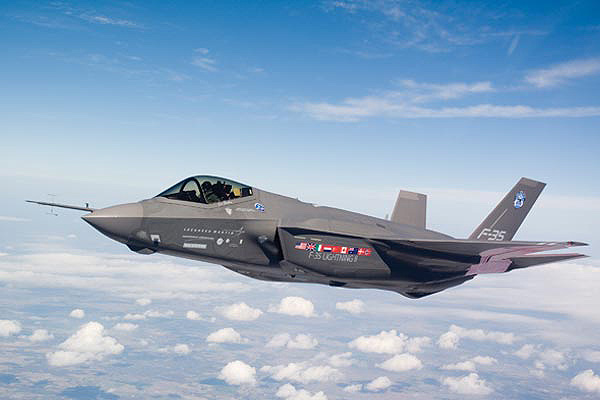
I hoped to save this blog for later when it would be far more relevant to the class. This administration has been sitting on the issue for more than a year now so they could have waited a bit longer but seeing as how Air Force acquisitions has no concept of our syllabus, I feel obligated at this time to comment on the coverage of this topic.
The coverage is boring. I would not expect you to expect anything more from the media on this topic because the topic is the KC-135 tanker replacement. It is a big hunk of flying metal. No matter how snazzy the contractors will try to make it, it will still be a big plane that carries fuel…and does not really do anything cool—(I had something perverse to say about the refueling process but reconsidered since this is on the record and for class—the picture should be enough).
I admit that federal contracts are pretty boring, especially the legal part. I would compare it to the making of legislation which has been compared to sausage making. But this acquisition process reads like a telenovela and the press is just dulling it down (even Danger Room). Jail, suicide, tawdry relationships and the gossip…oh the gossip.
The fed has been trying to get a new tanker for nine years. Now the acquisitions process is long, but this is ridiculous. It started getting ridiculous when Darleen Druyun of Air Force acquisitions recommended the Air Force lease new tankers from Boeing, as opposed to buying them flat out. Boeing has long been the favorite child of USAF (the reason for which will be obvious in a few lines) but this was going to cost the DoD millions more than if they were to have brand new tankers built.
Someone got wise and an investigation was launched. Funny thing, Druyun retired from her Air Force post and immediately became a new VP at…Boeing of all places. The contract was frozen and Darleen did jail time for this felony as did her new CFO (she threw him under the bus).
A new RFP (request for proposal) was issued for which Boeing and Northrop Grumman (with EADS--European Aeronautic Defense and Space Company) were the primary respondents. The turf war between Boeing and NGC goes way back (NGC has often lost contracts to Boeing but they have the B2, a personal favorite, and all the aircraft carriers DoD could want, so there), however, this time there would be hair pulling.
I should clarify how the RFP process works. Government office decides they need something and writes up an RFP specifying exactly what and how many. The RFP is posted to a database where all potential competitors would be interested. Contractor business development people work through the RFP with a fine tooth comb. Then each contractor has an opportunity to Q&A with the requestor. This time around NCG did, and Boeing apparently did not ask the right questions.
Northrop Grumman had a novel idea, very 21st century of them, to make the tanker multi-purpose. It would be a tanker, as the Air Force requested, but would double for cargo and personnel transportation. They came up with this novel idea through the Q&A portion of the RFP. So Boeing responded to the RFP with a technologically updated but like-the-old-one tanker and NGC with the “more bang for your DoD buck”, three-in-one. Guess who won. Contrary to popular sentiment, DoD likes a good bargain.
Boeing’s reaction was the standard “hey, that’s not fair”. GAO’s initial response was “too bad”….and then someone wrote their congressman. Well, a hundred or so somebody’s to be more accurate. Most of those letter-writing somebodies lived in the Seattle area where Boeing would have manufactured their tanker.
I mentioned earlier that Northrop Grumman was working with EADS. They are European and the bid was based on the use of Airbus (which as most of us know, is subsidized). This is where the issue became a political one (in case you don’t consider corruption in federal acquisitions political). Boeing launched a propaganda campaign through local media and successfully spun the coverage to highlight the apparent “outsourcing” of the all-American-tanker to the French. Joke is on them: the NGC-EADS tanker was to be built in Mobile, Alabama. But, tell one person in Congress that the French are taking jobs from their constituents and see what happens. Congress got in a tizzy and GAO launched an investigation (on the fairness of the RFP, but driven by the political agenda), once again freezing the bid process.
Meanwhile, elections…inauguration…we have a new President. A year plus goes by…Yesterday a new RFP for the same tanker.
Here is the thing: not only does Boeing know exactly what Northrop Grumman is going to bid, the new RFP was written to favor Boeing and exclude NGCs multi-purpose aspects from the competition (unless there is a deadlock in choosing) because it was “not fair” that NGC was so creative at meeting their customer’s needs. NGC is debating dropping the bid rather than wasting more money on R&D for a contract which is clearly already in Boeing’s pocket due to congressional meddling.
It would seem that, at least in defense procurement, protectionism is making a comeback. As if there is not enough pork in the budget after Congress is done with it, now political agendas are screwing with the competition of the market—more importantly, as it relates to national security (the old tankers are pushing 50, nickel and diming the Pentagon). Unsuccessfully trying to put my bias aside, the NGC model is better for the needs of the US military (but I am no defense expert).
Don’t ever underestimate when someone tells you to “write your congressman.”













